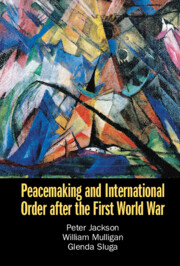
- Cited by 2
-
Cited byCrossref Citations
This Book has been cited by the following publications. This list is generated based on data provided by Crossref.
van den Heuvel, Charles 2025. Globus Iconographicus: Designing a Tool for Mapping Knowledge of the Arts. Knowledge Organization, Vol. 52, Issue. 1,
Maiolo, Joseph and Robson, Laura 2025. The League of Nations.
- Publisher:
- Cambridge University Press
- Online publication date:
- May 2023
- Print publication year:
- 2023
- Online ISBN:
- 9781108907750


